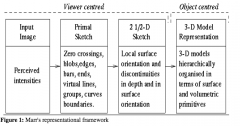![]()
![]()
![]()
Use LEFT and RIGHT arrow keys to navigate between flashcards;
Use UP and DOWN arrow keys to flip the card;
H to show hint;
A reads text to speech;
22 Cards in this Set
- Front
- Back
|
What does the magnocellular pathway tell us? |
Magnocells carry visual neural information along the upper dorsal stream of the brain. Help understand motion. Tell us WHERE objects exist in relation to ourselve HOW we guide our movement in relation to those objets |
|
|
What does the parvocellular pathway tell us? |
Parvocells carry visual information along the ventral stream. Help process visual information about shape, size, colour, clarity, contrast and detail. Helps us understand visual info related to the appearance of objects - WHAT of things. |
|
|
What does the upper stream tell us? |
Relates to spatial understanding WHERE and HOW we guide our movement/ Allow us to orientate and see whether our eyes are still or moving. Communicates with the part of the brain responsible for controlling eyes and hand movements. |
|
|
What does the lower stream tell us? |
Help us to identify, recognise and categorise WHAT we see. |
|
|
Describe how information is transferred from the eye to the LGN. |
Cones and rods connect through the ganglion and bipolar cells. These cells bundle up at the back - optic nerve. Then to the LGN. |
|
|
Describe the lateral geniculate nucleus. |
6 layers. (left) Fibres from rods (magno) - layer 2 (left) Fibres from cones (parvo) - layers 3 and 5 (right) fibres from rods - layer 1 (right) Fibres from cones - layers 4 and 6 |
|
|
How is the visual system organised? |
Topographically |
|
|
What is topographic mapping? |
How the visual system in our brains is organised. |
|
|
Define systematicity. |
It is pervasive in the brain. Most clear near sensorium A way of importing relationships and larger-scale representations into the brain. |
|
|
What does Lettvin et al.'s (1959) frog experiment tell us? |
Frogs have 5 types of ganglion cells - "feature detector" and interested in an aspect of the environment. |
|
|
What are the feature detectors of the frog's brain in Lettvin et al.'s (1959) experiment? |
Contract - Light/dark in small areas Convexity - small, dark and moving Changing contrast - moving edges Dimming - dimming from edge or centre of visual field. Dark - overall light intensity |
|
|
What are the main roles of vision? |
Object recognition Visual search Recognition by components Recognition as parsing |
|
|
What is Marr's approach to vision? |

Bottom-up, data-driven processing may be supplemented by top-down information and goals. |
|
|
What are Marr's (1982) levels of description in understanding complex processing systems? |
Computational Algorithmic Implementational |
|
|
What happens in coarse-coding? |
Any neuron can respond to a broader range of stimuli in the world. |
|
|
How can one cope with the slowness of neurons? |
Population coding - Whole populations fire at once and encode something. This leads to no shortage in neurons. OR using top-down processing |
|
|
What is the mathematic perspective on perception? |
The individual's brain generates an internal model of the external cause and bodily reactions It makes predictions about what will happen next. Successful prediction = perception Error exists between incoming signal and prediction and reducing this is successful prediction. |
|
|
What is Churchland et al.'s (1994) theory on vision? |
No obvious replacement term for "hierarchy" itself. There is a new set of concept that can describe interactive systems Interactive vision |
|
|
What is the case of DF? |
Damage to bilateral, ventral stream from CO poisoning. Dorsal intact. Can't identify WHAT the object is but can grasp it. |
|
|
Define affordance. |
How the object provides the opportunity for the organism to perform an action. E.g. a jug invites being picked up by its handle. |
|
|
Define amodal representation |
The way that the brain codes multiple inputs to integrate and create larger conceptual ideas. Patients with semantic dementia tend to overgeneralise images when they perform delayed-copy drawings. (Lambon-Ralph, 2008) |
|
|
Define simultanagnosia. |
The inability to perceive more than a single object at a time. |

